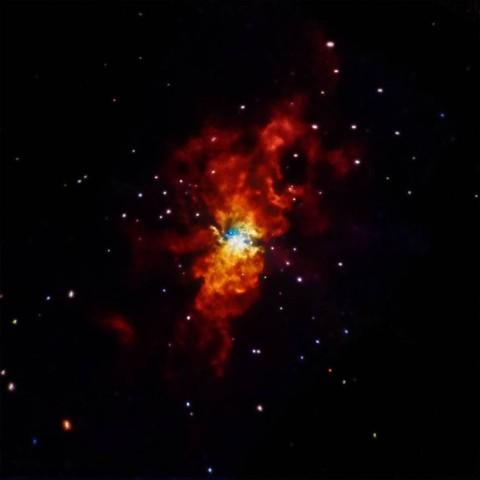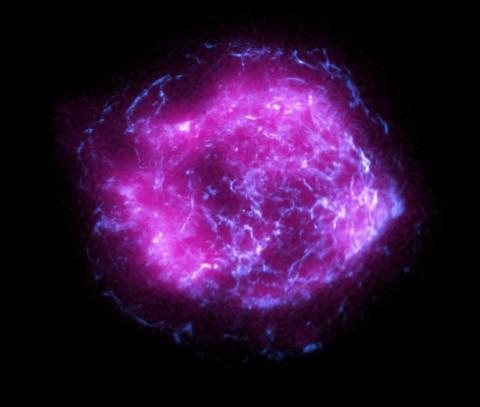General
Scientists discover a star that survived a supernova

The puzzling results give us new information about the origins of some of the most common, yet mysterious, explosions in the universe.
Scientists have discovered a star that seems to have survived the explosion of a supernova.
A team of astronomers looking at the site of the peculiar thermonuclear supernova SN 2012Z with the Hubble Space Telescope, were shocked to discover that a star had survived the explosion.
Not only had it survived — the star was even brighter after the supernova than it had been before.
‘Nobody was expecting to see a surviving star that was brighter. That was a real puzzle,’ said McCully, a postdoctoral researcher at UC Santa Barbara and Las Cumbres Observatory.
The team thinks that the half-exploded star got brighter because it puffed up to a much bigger state. Over time, they expect the star to slowly return to its initial state, only less massive and larger.

A supernova is a powerful and luminous stellar explosion.
‘This star surviving is a little like Obi-Wan Kenobi coming back as a force ghost in Star Wars,’ said co-author Andy Howell, senior staff scientist at Las Cumbres Observatory.
‘Nature tried to strike this star down, but it came back more powerful than we could have imagined. It is still the same star, but back in a different form. It transcended death,’
Thermonuclear supernovae, also called Type Ia supernovae, are important for measuring cosmic distances. Beginning in 1998, observations of these explosions revealed that the universe has been expanding at an ever-accelerating rate.
This is thought to be due to dark energy, the discovery of which won the Nobel Prize in Physics in 2011.
The origins of thermonuclear supernovae are poorly understood but astronomers believe they are the destruction of white dwarf stars, which are roughly the mass of the sun packed into the size of the Earth.
In 2012, the supernova 2012Z was detected in a nearby spiral galaxy NGC 1309, which had been studied in-depth and captured in many Hubble images over the years.
SN 2012Z was a strange type of thermonuclear explosion known as a Type Iax supernova which are dimmer, weaker cousins of the more traditional Type Ia. Because they are less powerful and slower explosions, some scientists have theorized that they are failed Type Ia supernovae. The new observations confirm this hypothesis.
What is a supernova?
A supernova is a powerful and luminous stellar explosion. It occurs during the last evolutionary stages of a massive star.
It is the biggest explosion that humans have ever seen. Each blast is the extremely bright, super-powerful explosion of a star.
For decades scientists thought that Type Ia supernovae explode when a white dwarf star reaches a certain limit in size, called the Chandrasekhar limit, about 1.4 times the mass of the sun.
Astronomers were not sure if stars ever got near the Chandrasekhar limit before exploding. The study authors now think that this growth to the ultimate limit is exactly what happened to SN 2012Z.
The new findings show that supernovae at least can grow to the limit and explode.
Scientists are now trying to understand what makes a supernova fail and what makes one successful as a Type Ia.

-

 Technology2 years ago
Technology2 years agoVoIP Number: Everything You Need To Know
-

 Music2 months ago
Music2 months ago[Music] Gnash Ft Olivia O’Brien – I Hate you, I Love you
-

 Music2 months ago
Music2 months ago[INSTRUMENTAL] John Legend – All Of Me
-

 Music2 months ago
Music2 months agoAlan Walker – Faded [INSTRUMENTAL]
-

 Music2 months ago
Music2 months ago[Video] 21 Savage ft. Offset & Metro Boomin – Rap Saved Me
-

 Music2 months ago
Music2 months ago[Instrumental] Wiz Khalifa – See You Again ft. Charlie Puth
-

 ANE Stories4 months ago
ANE Stories4 months ago[STORY] AMAKA THE LESBIAN (Complete Episodes)
-

 Music2 months ago
Music2 months ago[Music] Akon – Sorry Blame It On Me






























